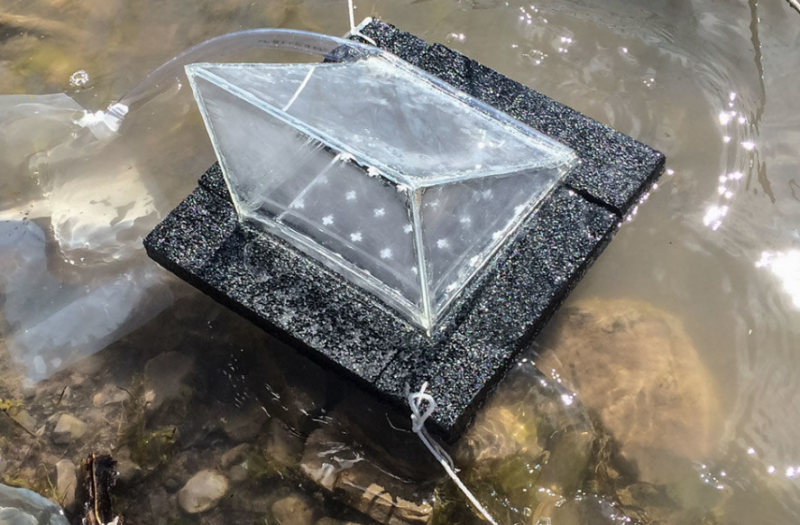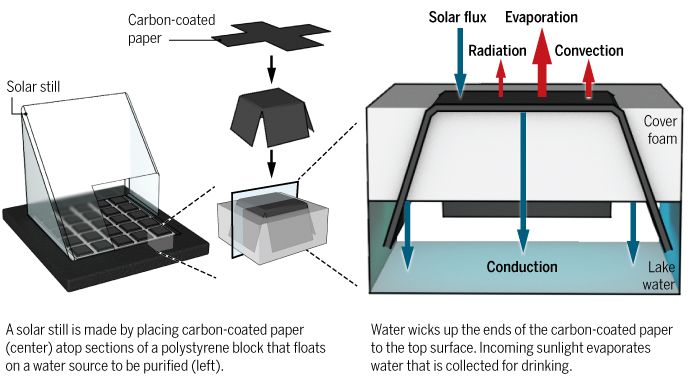Sunlight-powered Purifier Cleans Water for the Impoverished
Published on by Water Network Research, Official research team of The Water Network in Technology
Researchers report they have developed a cheap solar still, which uses sunlight to purify dirty water up to four times faster than a current commercial version.

Qiaoqiang Gan, SUNY Buffalo
The raw materials cost less than $2 per square meter. The technology will “allow people to generate their own drinking water much like they generate their own power via solar panels on their house roof,” says Zhejun Liu, a visiting scholar at the State University of New York (SUNY) in Buffalo and one of the study’s co-authors.
Qiaoqiang Gan, an electrical engineer at SUNY Buffalo, and his lab were developing new nanomaterials as absorbers for solar power cells, and wanted to also use them in a solar still. But it quickly became apparent that the material’s cost would never allow the technology to be viable. So Gan began looking for cheap alternatives.

His team’s new device has three main components. Gan and his colleagues start with a fiber-rich paper—sort of like the paper used to make currency. They coat this with carbon black, a cheap powder left over after the incomplete combustion of oil or tar. Next, they take a block of polystyrene foam—the stuff used to make coffee cups—and cut slices through it making 25 connected sections.
The foam floats on the untreated water and acts as an insulating barrier to prevent sunlight from heating up too much of the water below. The researchers then layer pieces of their paper over each section, folding the ends down so that they dangle into the water. The paper wicks water upward, wetting the entire top surface of each of the 25 sections. Finally, a clear acrylic housing sits on top.
During operation, evaporated water from the carbon paper is trapped by the acrylic and funneled to a collection vessel, and the paper wicks up additional water to replace it. Gan and his colleagues report this week in Global Challenges that the setup not only works, but that it’s 88% efficient at channeling the energy in sunlight into evaporating water. This allows a 1-square-meter-sized device to purify 1 liter of water per hour, which is about four times faster than commercially available versions, Gan says.
Equally important Gan adds, is that the still is cheap. He estimates the materials needed to build it cost roughly $1.60 per square meter, compared with $200 per square meter for commercially available systems that rely on expensive lenses to concentrate the sun’s rays to speed evaporation.
At that price, providing the minimal water needed for a family of four might cost as little as $5 for the raw materials per device. That cheap cost may not only help people in impoverished regions, but also help aid workers deploy cheap water purifiers to people affected by natural disasters that wipe out safe drinking water sources. “We think this is an immediate application,” Gan says.
The authors of the report have formed a company—Suny Clean Water—to commercialize the work and are already in discussions with other companies around the world to make the new technology available.
Read more on: Science Magazine
Media
Taxonomy
- Treatment
- Filtration Solutions
- Water Treatment Solutions
- Filtration
- Drinking Water
- Solar Products
- Solar Power